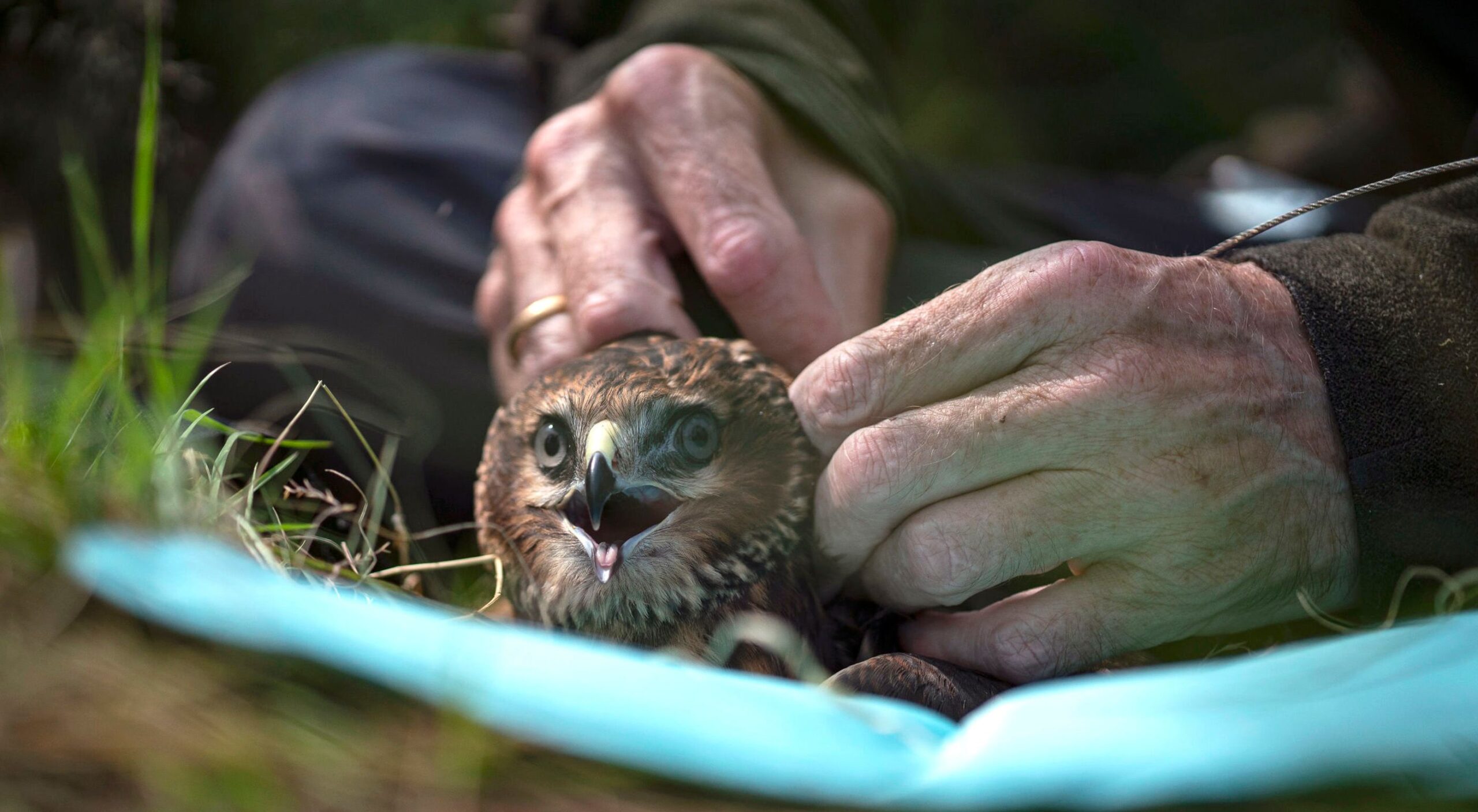A row has broken out over a decision by England’s environmental regulator not to renew a scheme that helped boost numbers of one of the country’s most endangered birds of prey.
Natural England has refused the Moorland Association permission to continue working with gamekeepers on a project that helped increase hen harrier numbers by more than tenfold.
Environmentalists claim the association is “in cahoots” with Natural England to bring about an end to the scheme to the benefit of those who persecute the birds.
• Bird of prey killed illegally every two weeks in Scotland
The association, which campaigns both for moorland conservation and for grouse shooting’s “significant role in the economy of rural upland areas”, has billed the scheme as “Britain’s most successful conservation project of this century”, saying it has helped to boost hen harriers from four breeding pairs in 2016 to 50 pairs in 2023.
The brood management scheme sought to reduce the illegal killing of hen harriers by gamekeepers who fear that the moorland birds undermine their livelihood by hunting grouse.

A hen harrier has a satellite tag fitted
NATURAL ENGLAND/PA
If a nest was discovered within six miles of another, gamekeepers could ask the association to take the chicks into care, raising them in an aviary before releasing them in another area away from other hen harriers. The intention was to spread the population across the country, giving them space to breed and even out their impact on grouse.
The association used satellite tracking to establish that chicks raised in captivity were more likely to survive than those that grew up in nature.
The scheme ran as a trial from 2018 to last year, but when the association asked for permission to continue it, Natural England refused, taking issue with the association’s intention to stop satellite-tracking the birds.
Satellite data has been used to amass evidence of the illegal killing of hen harriers. A 2023 paper by the RSPB used the data to conclude that it accounted for 27-41 per cent of hen harrier deaths in their first year.
Andrew Gilruth, chief executive of the association, argued that satellite tracking was no longer necessary because it had established that captured birds fared better than wild ones. He added that as it was costly and logistically complicated, it would be better to track the birds by putting colourful tags on their legs.

Hen harriers live in open areas with low vegetation and like to nest on the ground of upland heather moorland during breeding season
JAMES OSMOND/GETTY
“We should be removing complexity where it is realistic to do so,” he said.
“This is a proven case of human-wildlife conflict. Other than brood management there isn’t anything else that can address that conflict. If you follow international guidelines on human-wildlife conflict produced by the International Union for Conservation of Nature, the one thing you should not do is allow [conservation projects] to come to a stop, because then you have a breakdown in confidence on all sides.”
However, Dr Ruth Tingay, author of the blog Raptor Persecution UK, argued that the scheme was “in cahoots with the grouse shooting industry, the very industry responsible for the species’ catastrophic decline in England”.
She said that the association wanted to stop satellite tagging because [the data has] been so very effective at revealing the devastating extent of ongoing hen harrier persecution.
Gilruth responded: “There’s nothing satellite tagging will tell us that we don’t already know. As for the accusation that we’re in cahoots with grouse shooters, it couldn’t be further from the truth. This scheme was led by the Department for the Environment, Farming and Rural Affairs.
“People like Ruth who advocate for a grouse shooting ban don’t want this compromise to work.”
In its evaluation of the project Natural England concluded that the scheme was likely to have helped hen harriers breed on grouse moors, but that while it appeared to have reduced illegal killings in some areas, in other places there were unacceptable levels of the practice.

Gamekeepers have been accused of illegally killing hen harriers in fear that the birds undermine their livelihood
ALAMY
Dr James Robinson, the RSPB’s chief operating officer, said: “The RSPB has consistently opposed brood management on both ethical and scientific grounds. It may have contributed to increasing harrier numbers, but more harriers has simply meant record levels of persecution […] The key to the hen harrier’s recovery is by ending illegal persecution.”
Separately, as 115 wildfires blazed across Britain since January, making 2025 already the second-worst year for burned area, Gilruth accused the government of “making things more dangerous by letting too much vegetation build up”.
He added: “Since 2021 Natural England has restricted traditional ways of managing this, such as winter burning and mowing […] The National Fire Chiefs Council is urging the government to step in with a strategic plan. We should not have to wait for the first deaths before the government shows leadership on wildfires.”
